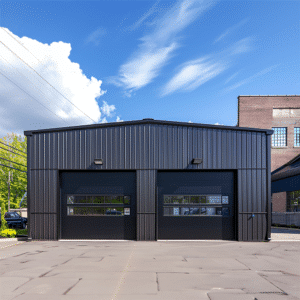Adhesives—often the unsung heroes of modern construction—might not steal the spotlight like a crane piercing the skyline or steel girders shaping a framework, but their role is indispensable. Imagine building a puzzle where each piece seamlessly fits together, creating a beautiful image. In the construction realm, adhesives are that binding force, ensuring that everything from skyscrapers to small-scale structures stands the test of time.
The Adhesive Advantage in Construction
Adhesives encompass a broad range of products designed for specific purposes, from industrial projects to residential builds. But what exactly makes them a cornerstone in modern construction methods? The versatility and adaptability of adhesives in construction allow for the innovative joining of materials that traditional methods, such as welding and mechanical fasteners, might struggle to achieve.
By providing a bond that can bear substantial weight and stress, adhesives help create sturdy connections in 16×20 metal buildings and other structures. Whether in the sweltering heat or freezing cold, adhesives impart resilience, reducing the likelihood of breakage or wear over time.
Types of Adhesives in Construction
Selecting the right adhesive can make a colossal difference, akin to choosing the right gear for an expedition. Here’s a look at the types of adhesives used in construction:
1. **Epoxy**: Known for its robust bonding capabilities and chemical resistance, epoxy adhesives are popular in heavy-duty construction projects. They are ideal for securing components within metal buildings Ontario environments.
2. **Polyurethane**: Known for their flexibility and resistance to environmental fluctuations, polyurethane adhesives provide a durable bond while accommodating movement, making them perfect for construction scenarios exposed to dynamic stresses.
3. **Acrylics**: Acrylic adhesives offer quick setting times and are often used in applications needing a fast, permanent bond. They’re suitable for various surfaces, including glass, wood, and plastics.
4. **Silicone**: Not just for sealants, silicone adhesives provide a waterproof sealant perfect for constructions exposed to Harbor-style wear and tear over time.
Applications of Adhesives in Modern Construction
In modern-day construction techniques, adhesives have become indispensable in several applications, which can be likened to the glue in a well-connected community. These applications include but are not limited to:
– **Building Envelope Systems**: Adhesives provide thermal insulation and energy efficiency enhancements, keeping internal temperatures consistent and reducing energy bills.
– **Paneling and Cladding**: When building metal structures, especially in prefabricated and modular construction, adhesives secure panels and cladding systems effectively, ensuring they withstand environmental stressors.
– **Flooring Systems**: Adhesion in flooring systems eliminates the need for nails or screws, giving a seamless look while ensuring durability and easy maintenance.
– **Window and Glazing Systems**: Advanced adhesives in these systems offer added thermal efficiency, noise reduction, and enhanced aesthetics.
Sustainable Construction and Adhesives
Ever thought about building a skyscraper with the same ecological footprint as planting a garden? While it might sound far-fetched, adhesives in construction can contribute towards this green vision.
Utilizing adhesives means less material wastage and more resource efficiency. Their application supports the use of lighter, recycled, or locally sourced materials, which aligns perfectly with eco-friendly construction practices. In line with BuildForce Canada – Role of Adhesives in Construction insights, adopting adhesives in building significantly contributes to sustainable practices.

Safety and Efficiency with Adhesives
In any construction setting, safety and efficiency are paramount—non-negotiable pillars. Adhesives elevate both these standards by reducing occupational hazards associated with traditional construction methods like welding or heavy fastening.
Since adhesives can be applied in constricted spaces without compromising bond strength, they decrease the need for heavy machinery, subsequently minimizing safety risks. This approach not only boosts construction efficiency but also fosters a safer working environment for construction professionals.
The Future of Construction with Adhesives
Peering into the future, one might ask: will adhesives redefine the limits of architecture? As the construction industry becomes increasingly digitally integrated and technologically advanced, the growth of adhesives is poised to soar. New developments focus on creating even more specialized adhesives tailored to specific services within construction.
From smart adhesives that change properties based on temperature to those that can dissipate energy in seismic zones, the horizon is brimming with possibilities. In essence, adhesives represent not just a mere tool, but a transformative force driving the future of how we build.
Building Strong Foundations
In the world of construction, where everything hinges upon the strength of its foundation, adhesives quietly facilitate monumental achievements. They provide the silent assurance that each component of a building, like a partner in an unspoken dance, moves in harmony with its environment.
As awareness of the role of adhesives in construction grows, so will their significance in merging innovation with tradition. Embracing adhesives doesn’t just glue parts together—it bonds the future of construction with concepts of sustainability, safety, and smart technology.
In conclusion, when integrating new materials and advancing construction methods, the strategic use of adhesives substantiates the adage: strong foundations build enduring legacies. As the architecture of tomorrow shapes, these humble, bonding agents will undoubtedly remain at the heart of transformative construction.










